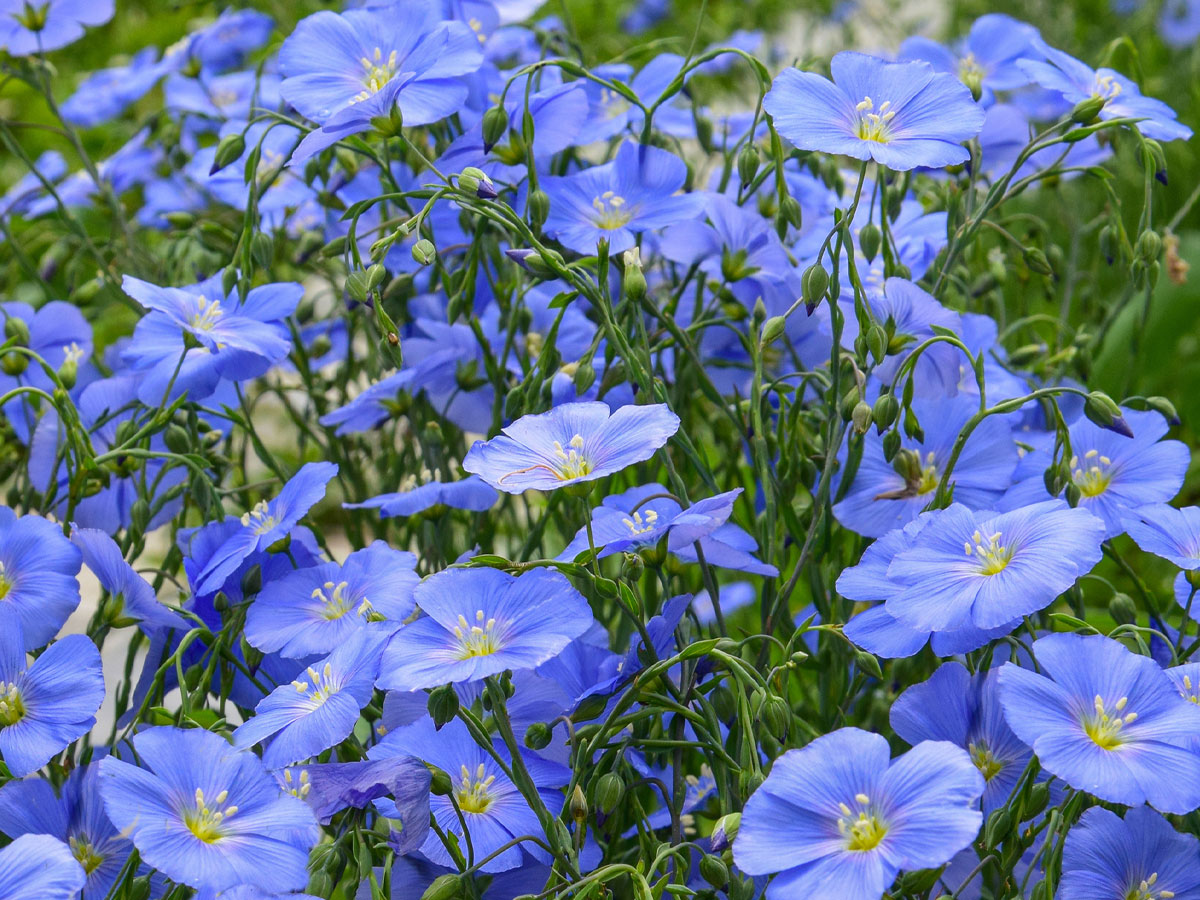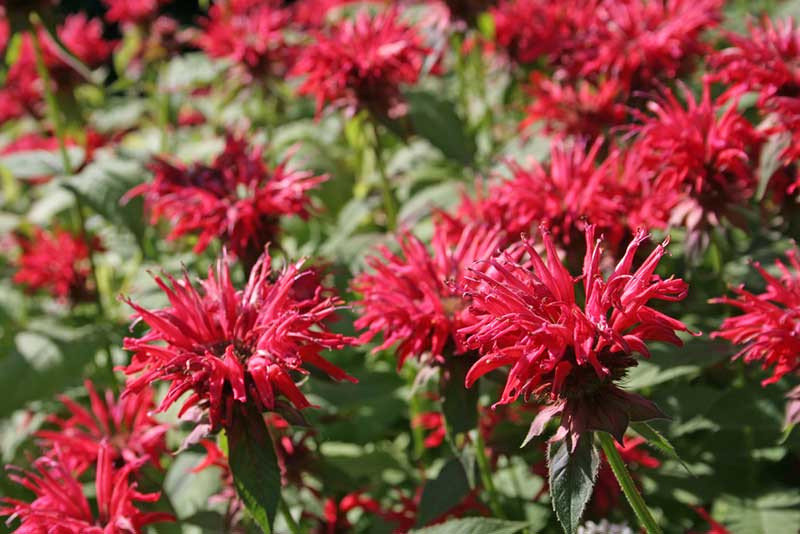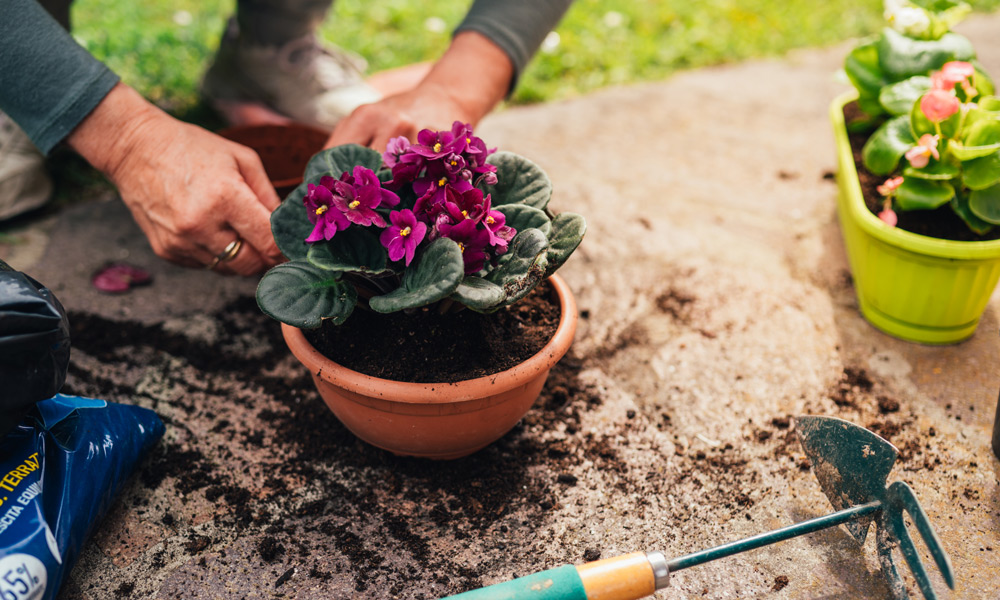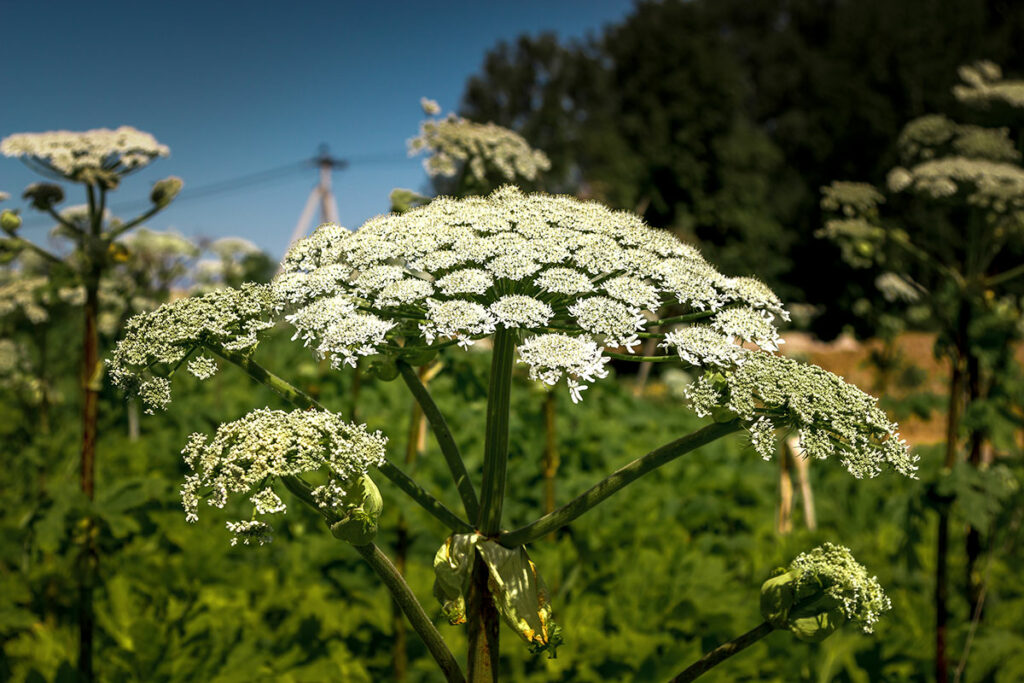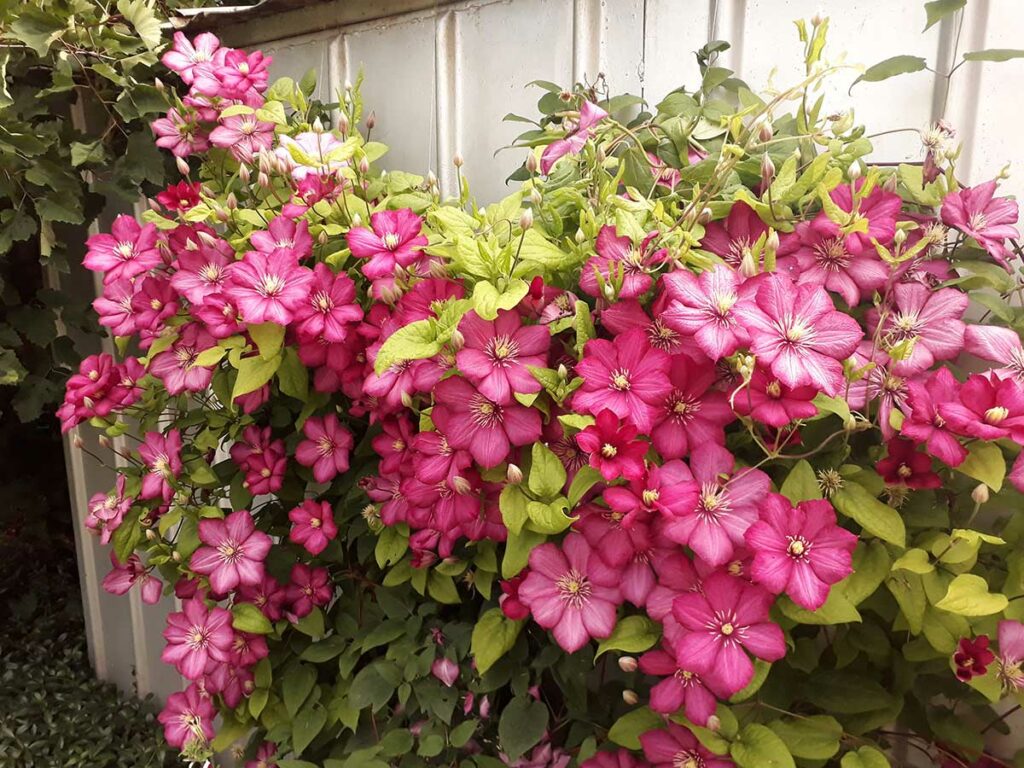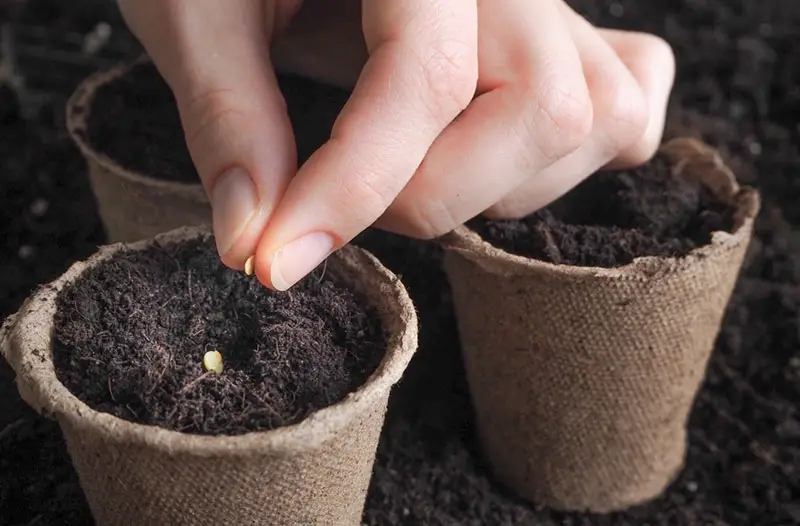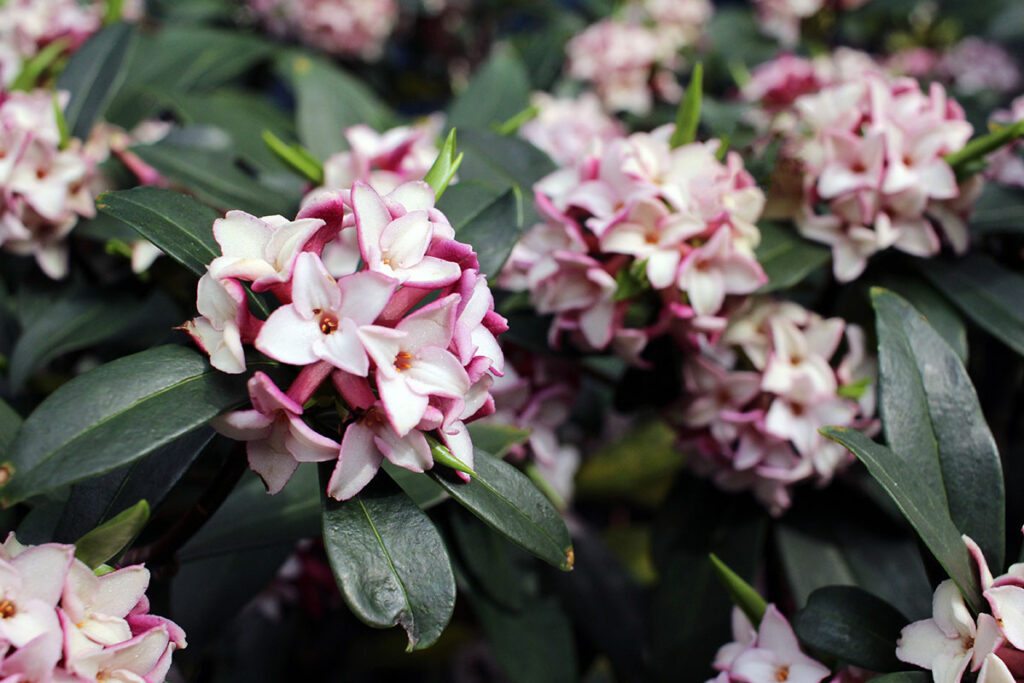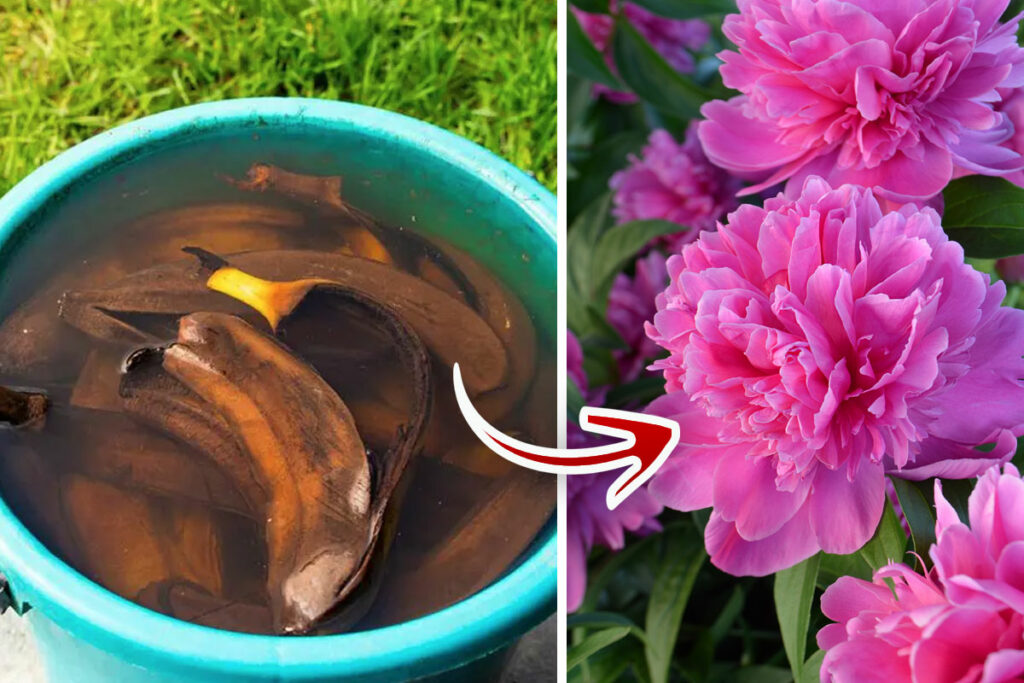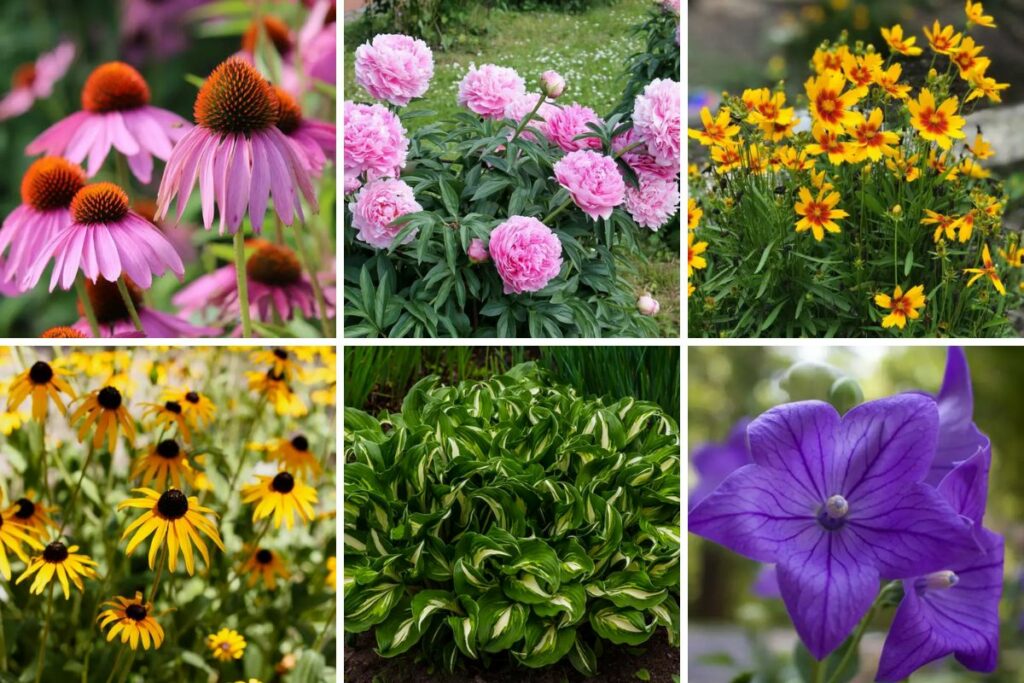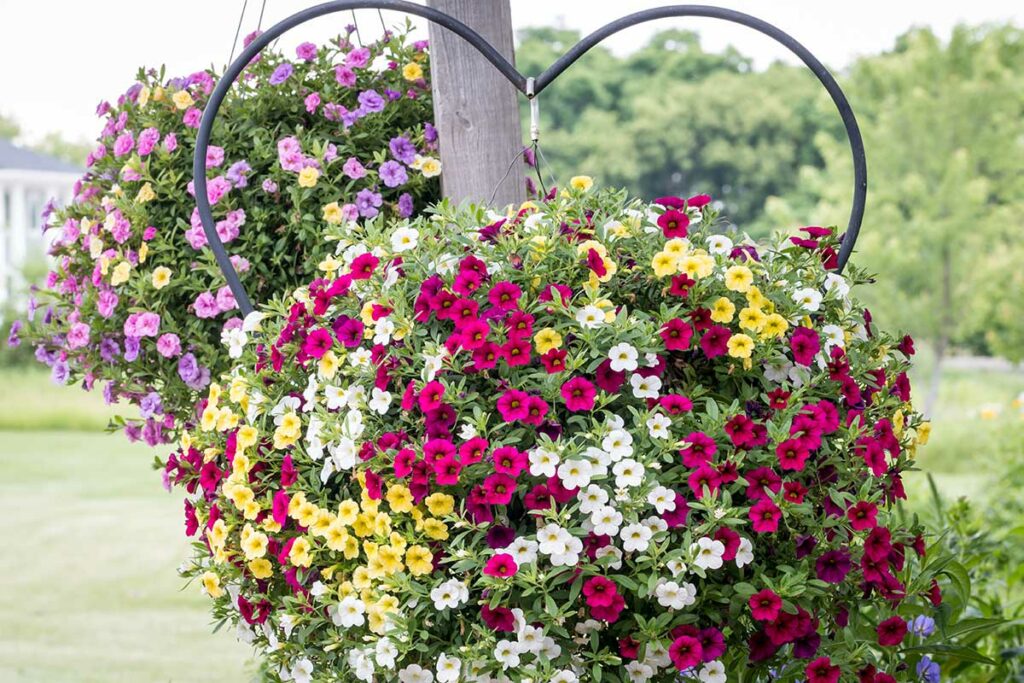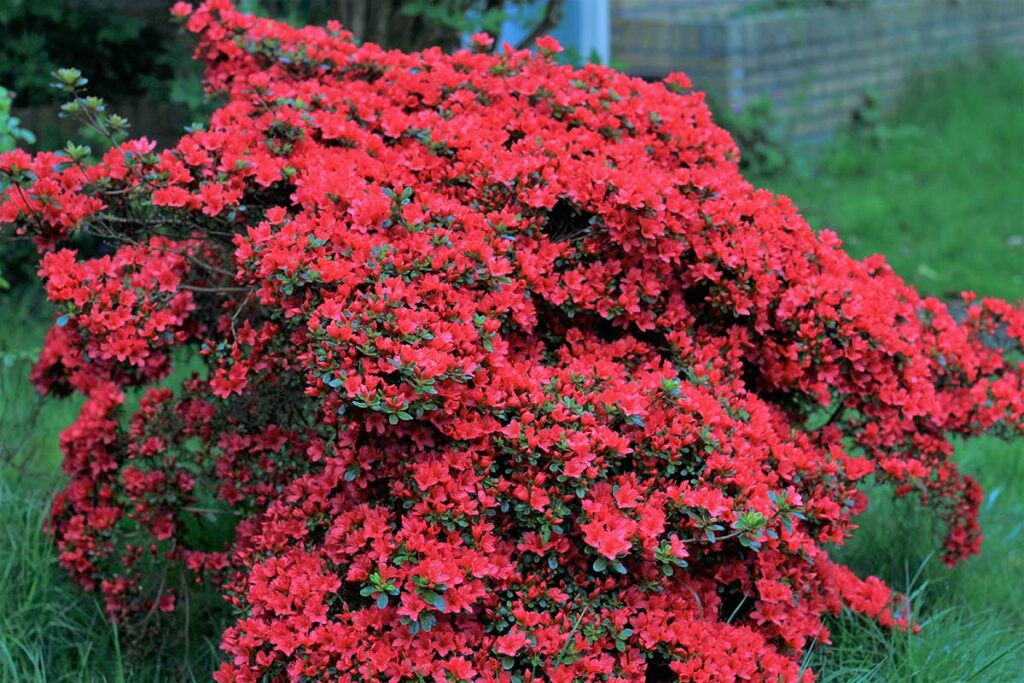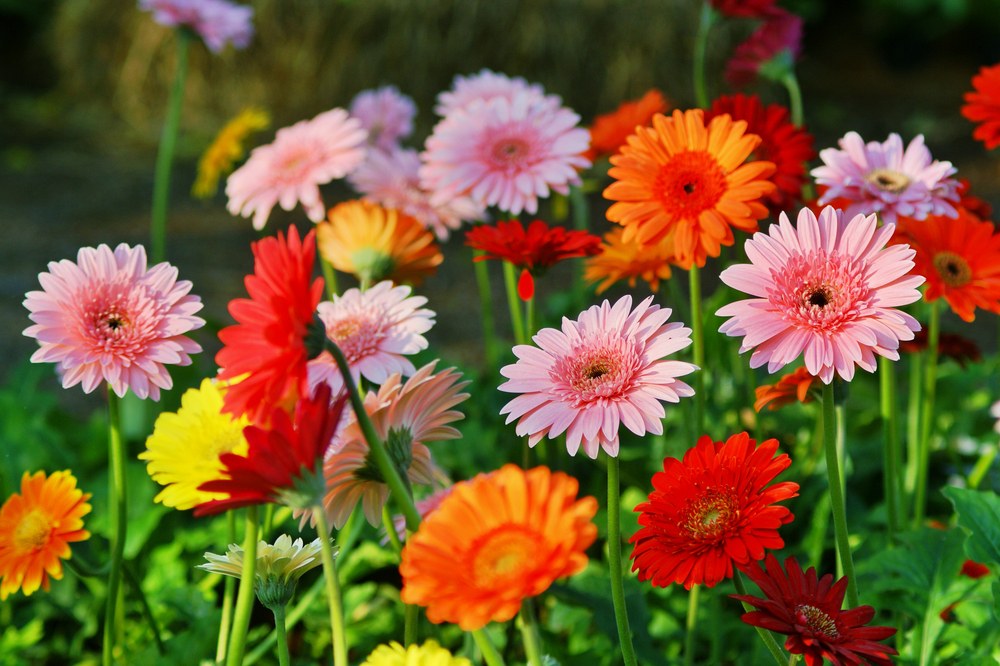
Fertilizing gerbera daisies can make a significant difference in the growth and health of these beautiful flowering plants. When given the proper nutrients, gerbera daisies will reward you with vibrant colors and hearty blooms that can enhance any garden or indoor space.
In this article, we’ll share some tips to help you effectively fertilize gerbera daisies and maximize their potential.
Getting the right balance of nutrients is crucial for gerbera daisies, as too much or too little can result in lackluster growth or plant issues. With these tips, you can ensure your gerbera daisies receive just what they need to flourish.
Whether you are a seasoned gardener or a novice looking to add some color to your home, these guidelines will be essential in fostering a nurturing environment for your gerbera daisies.
Understanding the specific needs of gerbera daisies, such as how often to fertilize and what type of fertilizer to use, can make all the difference in the long-term health and beauty of your plants.
By following the advice provided in the coming sections, you’ll be well on your way to growing stunning, vibrant gerbera daisies that bring joy to any space.
Understanding Gerbera Daisy Fertilization Needs
Gerbera Daisies are popular plants known for their beautiful and vibrant flowers. To keep these plants healthy and blooming, it’s essential to meet their fertilization needs. In this section, we will discuss the specific requirements of Gerbera Daisies and how to best meet them.
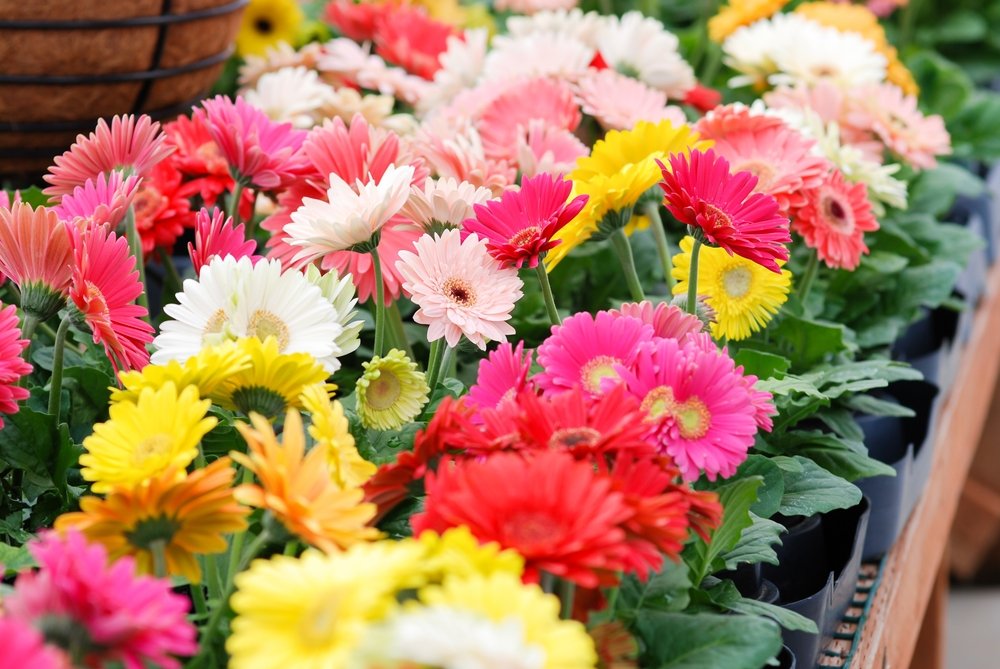
Gerbera Daisies require a slightly acidic soil with a pH range of 6.0-6.5, which suits the uptake of nutrients. They prefer a balanced fertilizer to ensure they receive the essential nutrients, like nitrogen, phosphorus, and potassium, in equal amounts. A good choice for Gerbera Daisies would be a 10-10-10 or 20-20-20 water-soluble fertilizer, as these formulas provide equal proportions of the vital nutrients.
It’s also important to keep the plants well-fed consistently throughout the growing season. During the spring and summer months, when the plant’s growth is most active, it’s advisable to apply fertilizer every 4-6 weeks. In fall and winter, you can reduce the frequency to once every 8-10 weeks since the plant’s growth slows down.
Another thing to remember is that over-fertilizing can be harmful to the plant. Gerbera Daisies are particularly sensitive to high levels of nitrogen, as it can lead to lush foliage growth at the expense of flowering. Therefore, it’s essential to follow the recommended rates and dilute the fertilizer as per the package instructions.
To summarize, providing the right nutrients, adjusting the fertilization schedule based on the season, and avoiding over-fertilization are the key factors to meet the fertilization needs of Gerbera Daisies. Following these recommendations will help maintain vibrant blooms and healthy growth in your Gerbera Daisy plants.
Choosing the Right Fertilizer
When it comes to fertilizing Gerbera Daisies, selecting the ideal fertilizer is important for maintaining strong, healthy plants. In this section, we’ll discuss the differences between organic and synthetic fertilizers, as well as the ideal NPK ratio.
Organic vs. Synthetic
Organic fertilizers are made from natural sources, such as compost, manure, or bone meal. These fertilizers offer numerous benefits for Gerbera Daisies, including:
- Slow-release nutrients, providing long-lasting nourishment to your plants
- Improved soil structure and water retention
- Encouraged growth of beneficial microbes
Organic fertilizers typically come in granular or liquid forms and can be applied directly to the soil around your Gerbera Daisies.
On the other hand, synthetic fertilizers are chemically manufactured and provide nutrients directly and quickly to your plants. Some benefits of synthetic fertilizers include:
- Precise nutrient composition for targeted plant growth
- Rapid results
- Easy application, often as a liquid or water-soluble powder
Keep in mind that overuse of synthetic fertilizers can contribute to soil and water pollution, and may harm beneficial soil organisms. Choose based on your preferences and desired results.
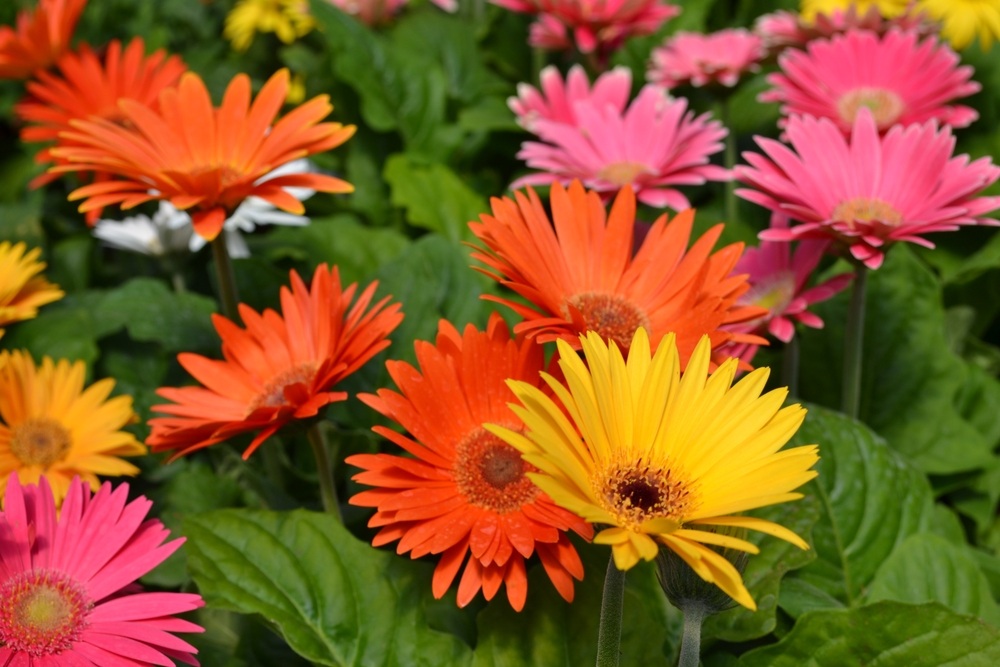
NPK Ratio
An essential factor when selecting a fertilizer is the NPK ratio. NPK stands for Nitrogen (N), Phosphorus (P), and Potassium (K). These nutrients are critical for healthy Gerbera Daisies:
- Nitrogen (N): Promotes foliage and stem development
- Phosphorus (P): Supports root growth and flower production
- Potassium (K): Enhances overall plant health and disease resistance
For Gerbera Daisies, a balanced NPK ratio, such as 10-10-10 or 12-12-12, is suitable. This ensures your plants receive an even amount of each nutrient for optimal growth and flowering.
Remember to follow the fertilizer package instructions for application rates and always water your Gerbera Daisies thoroughly after applying fertilizer to prevent nutrient burn.
Proper Timing and Application Techniques
Frequency
Gerbera daisies benefit from regular fertilization. It’s recommended to apply fertilizer every 4-6 weeks during the growing season (spring through fall). Fertilizing during dormancy (late fall and winter months) is not necessary, as the plant’s growth rate decreases during this time.
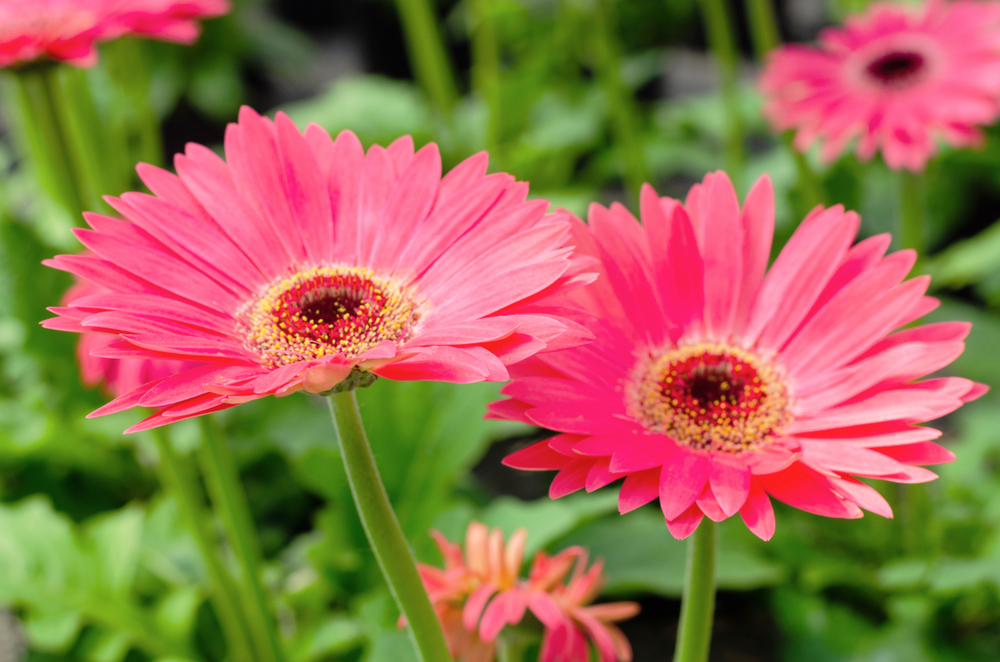
Water-Soluble vs Granular
There are two main types of fertilizers you can use for Gerbera daisies: water-soluble and granular:
- Water-soluble fertilizers are mixed with water and applied to the soil. This allows the nutrients to be quickly absorbed by the plant. Make sure to carefully follow package instructions for mixing ratios.
- Granular fertilizers are spread around the base of the plant and slowly release nutrients over time. These may be more convenient for gardeners who prefer less frequent applications.
Both types can be effective for Gerbera daisies, so choose the one that best suits your gardening style.
Methods
There are several methods for applying fertilizer to Gerbera daisies:
- Foliar feeding: Apply water-soluble fertilizer directly to the plant’s foliage, allowing the nutrients to be absorbed through the leaves. This can be especially helpful for plants with nutrient deficiencies, but should be done sparingly to avoid over-fertilization.
- Side-dress: Sprinkle granular fertilizer around the base of the plant, at least 6 inches away from the stem. This method provides continuous nutrient release as the granules break down over time.
- Soil drench: Pour a solution of water-soluble fertilizer onto the soil around the base of the plant. This allows for nutrients to be absorbed by the plant through its roots.
Remember to carefully follow the label instructions of the chosen fertilizer and apply it with the appropriate method to ensure the best results for healthy, vibrant Gerbera daisies.
Fertilizing Indoor vs Outdoor Gerbera Daisies
When it comes to fertilizing your Gerbera daisies, it’s essential to understand the differences between indoor and outdoor plants. This is because their needs might slightly vary given their growing conditions.
Indoor Gerbera Daisies require careful attention as they can be more susceptible to over or under fertilization. To maintain their beautiful blooms and vibrant colors, it’s recommended to use a balanced liquid houseplant fertilizer, ideally with a ratio of 10-10-10 (N-P-K). Dilute the fertilizer to half strength and apply it every two to four weeks during the growing season, avoiding over-fertilization which could harm your daisies.
Ensure that the potting mix is kept consistently moist but not overly wet. Make sure to let the surface dry between watering to prevent root rot. Indoor Gerbera daisies also appreciate good air circulation, so a gentle breeze from time to time can benefit them.
Outdoor Gerbera Daisies can tolerate a more flexible fertilizing schedule. You can use either balanced granular or liquid fertilizers, with a similar ratio of 10-10-10. Apply the fertilizer every four to six weeks during the growing season, and you can adjust the concentration to the full recommended strength for outdoor conditions.
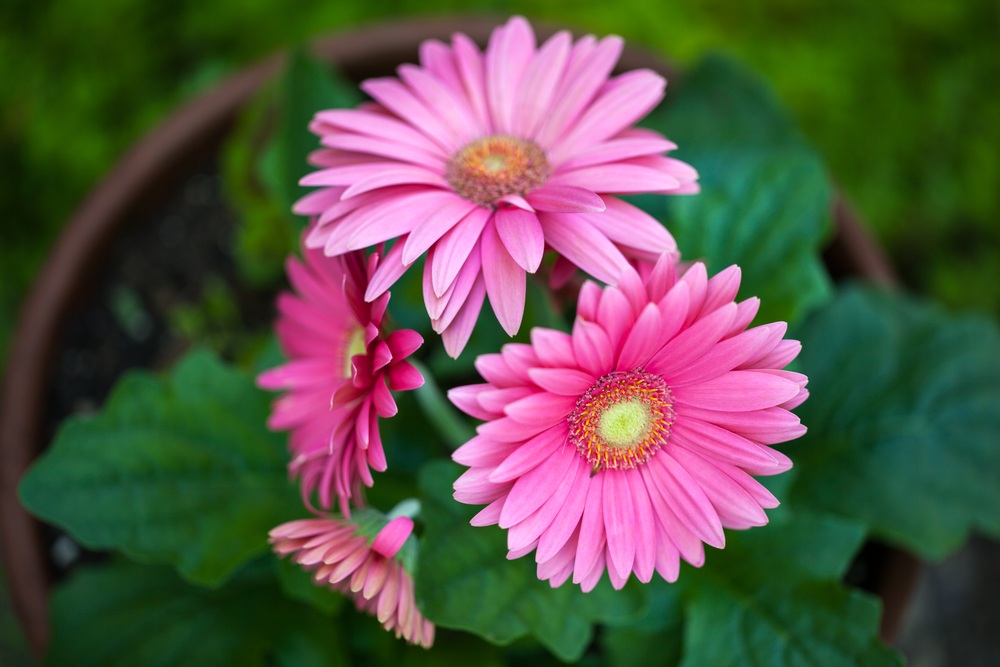
When it comes to watering outdoor Gerberas, make sure to water them deeply and less frequently, allowing the soil to dry slightly between watering. This encourages a healthy, deep root system, which is crucial for a flourishing plant.
In conclusion, the key differences when fertilizing indoor versus outdoor Gerbera daisies are the fertilizer type, the concentration, and the frequency of application.
Maximizing Blooms and Growth
Growing Environment
To maximize blooms and growth of your Gerbera Daisy, it’s essential to create the ideal growing environment. Start by ensuring your plant gets 6-8 hours of bright, indirect sunlight daily. If needed, supplement with artificial light (like a grow lamp) for consistent exposure.
Plant your Gerbera Daisy in well-draining soil (preferably a mix of peat moss, perlite, and vermiculite) to avoid waterlogging the roots. Maintain a consistent room temperature of 65-70°F (18-21°C) during the day and allow it to drop to 60°F (15°C) at night. This temperature range helps mimic their natural habitat and promotes robust growth.
Additional Care
Aside from the growing environment, follow these additional tips to boost your Gerbera Daisy’s overall health and encourage abundant blooms:
- Watering: Water the plant deeply and consistently, allowing the top inch of soil to dry out between watering sessions. Avoid getting the leaves and crown wet, as this can lead to fungal infections.
- Fertilizing: Apply a balanced, water-soluble fertilizer (preferably 10-10-10 or 20-20-20) every 4-6 weeks during active growth. In winter, reduce to once every 2-3 months.
- Deadheading: Regularly remove spent blooms to encourage continuous flowering. This prevents the plant from redirecting energy into seed production, promoting healthier foliage and more blooms. To deadhead, pinch off the faded flowers just below the base.
- Pruning: Trim back any leggy or overgrown stems to maintain a bushy, compact appearance. Pruning also helps improve airflow around the plant, reducing the risk of diseases.
- Pest control: Keep an eye out for common pests like aphids, spider mites, and thrips. Use insecticidal soap or neem oil as a preventative measure or to treat infestations.
By carefully considering the growing environment and providing additional care, you can help your Gerbera Daisy thrive, producing impressive, continuous blooms and robust growth.
Common Mistakes to Avoid
When fertilizing Gerbera daisies, it’s important to avoid some common mistakes that can hinder their growth and health. In this section, we’ll discuss three main errors people make, so you can be better equipped to care for your Gerbera daisies.
Over-Fertilizing
One major mistake is over-fertilizing your Gerbera daisy plants. While it’s essential to provide the necessary nutrients, too much fertilizer can cause more harm than good. Over-fertilizing can lead to:
- Root burn, making it difficult for the plants to absorb water and nutrients
- Excess foliage growth at the expense of flower production
- Increased susceptibility to pests and diseases
To avoid over-fertilizing, follow the recommended application rates on your fertilizer packaging and try to apply it evenly around the plant’s base.
Using the Wrong Type
Another common mistake is using the wrong type of fertilizer for your Gerbera daisies. These flowers require a balanced fertilizer with equal amounts of nitrogen (N), phosphorus (P), and potassium (K). Look for a fertilizer with an N-P-K ratio of 10-10-10 or similar.
Using an improper fertilizer can lead to nutrient imbalances or deficiencies, affecting the plant’s overall health and bloom production. For example, too much nitrogen can result in more leaves and fewer flowers, while phosphorus and potassium deficiencies can impact overall plant vitality and disease resistance.
Ignoring Soil pH
Lastly, many gardeners overlook the importance of soil pH when fertilizing Gerbera daisies. These flowers prefer slightly acidic soil, with a pH range of 5.5 to 6.5.
If your soil’s pH is outside this range, it may affect the plant’s ability to absorb nutrients, even if you’re applying the correct type and amount of fertilizer. To maintain optimal soil pH for your Gerbera daisies:
- Test your soil regularly (at least once a year) and adjust accordingly
- Add sulfur or peat moss to lower pH if it’s too alkaline (above 6.5)
- Apply lime to raise pH if it’s too acidic (below 5.5)
By being mindful of these common fertilizing mistakes, you can help ensure that your Gerbera daisies receive the proper nutrients and care they need to thrive and produce vibrant, beautiful blooms.
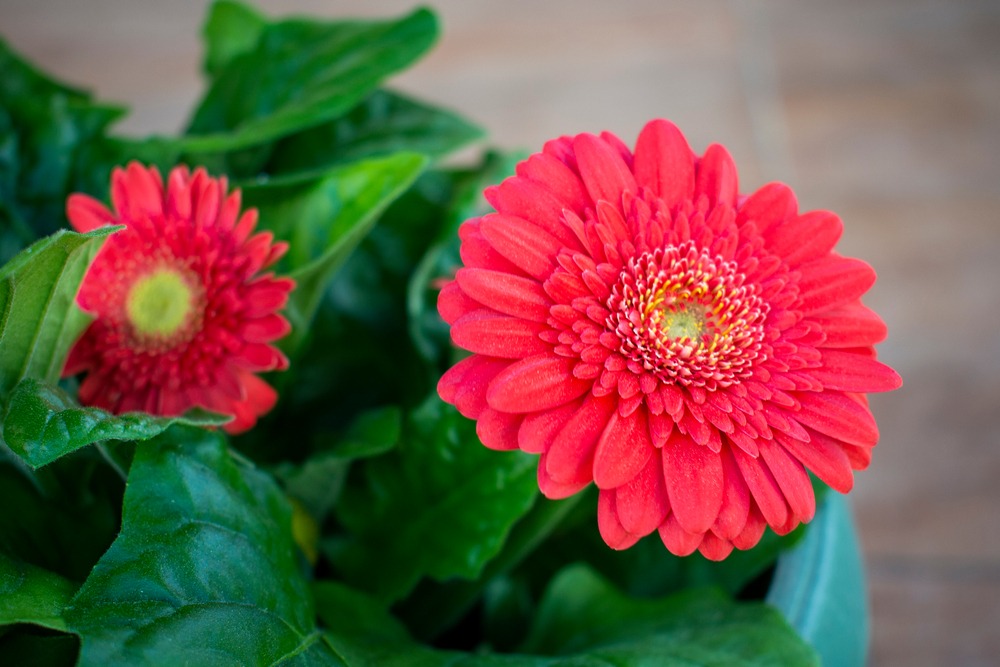
Final Thoughts
Gerbera daisies are admired for their colorful blooms and cheerful appearance. It’s essential to fertilize these plants correctly to help them reach their full potential. Following a couple of simple tips can make a significant difference in your Gerbera daisies’ health and vibrancy.
First and foremost, it’s crucial to choose the right fertilizer for your Gerbera daisies. A balanced, slow-release granular fertilizer with a ratio of 14-14-14 or 10-10-10 is an ideal option. This balanced composition provides the right nutrients in a gradual manner, preventing burning or over-fertilization.
When applying fertilizer, always follow the manufacturer’s recommended dosage and guidelines. Typically, it’s best to fertilize Gerbera daisies every 4-6 weeks during the growing season. Sprinkle the fertilizer evenly around the plants and water thoroughly to help the nutrients absorb into the soil.
Monitoring the pH levels of your soil is also essential for ensuring a healthy environment for your Gerbera daisies. These plants prefer slightly acidic soil with a pH range of 5.5 to 6.5. If needed, use a soil acidifier or add organic matter such as peat moss to adjust the pH level.
In conclusion, proper fertilization is a critical step in maintaining the health and beauty of your Gerbera daisies. By following these tips, you’re setting your plants up for success, and you’ll be able to enjoy their vibrant and cheerful blooms for many seasons to come.

